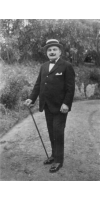Wine from Coppo

The history of Coppo winery is inextricably wound with the wine history of Piedmont. It is closely linked to the development of the city of Canelli, known as the capital of Italian sparkling wine and one of Italy’s most important viticultural centers today.
Coppo’s history is one of tradition and courageous vision for the future, of sacrifice and innovation. It is a story of the unconditional love that Coppo has for their vines’ origins, for varieties that have always been cultivated in Piedmont, and for old family traditions.
The origins of the winery date back to 1892. For over 120 years, the family has remained the sole owner. Since the very beginning, the Coppo family has managed estate vineyards and bottled their own wine under the name of Coppo, making it one of the oldest family-run wineries in all of Italy.
In fact, in 2012, Unioncamere added the winery to the national register of historical businesses, highlighting its uninterrupted activity for over a century in the commodity market.
Piero Coppo was the head of the family and founder of the core that became today’s modern winery. He was known for his finely-tuned palate and infallible nose. Above all, he was known for his strong sense of ethics with which he managed all his activities. He strived for perfection down to the last detail, personally checking on all phases of work, from the vineyards to pressing, and from the winemaking to bottling and aging in a near-obsessive search for absolute quality without compromise.
At the time, Canelli was an important market for Piedmontese grapes, and a fundamental juncture for vine growers and winemakers. It was in this city in the 1800s that Coppo made the first Italian spumante with secondary bottle fermentation. This method is the same used to make Champagne; thus, the wine was called Moscato Champagne. Coppo’s intuitive move was destined to change Italian wine history and cast the city of Canelli in a role of noteable importance as it proved itself worthy of developing an international wine industry at the forefront of change.
In Canelli in 1913, Piero married Clelia Pennone, the heir to the Pio Pennone winery, a “leading and renown” producer and exporter of wines that had already been active for two generations. Thus the Pennone winery was added to Coppo in the center of Canelli between Via Giuliani and Via Alba, and today comprises the central seat of the winery.
In this very winery at the end of the 18th century, the galleries and corridors known today as the Underground Cathedrals were excavated from the tuff stone under the earth. Because of their historical value and unique, architectural beauty, these underground cellars have been recognized as a Unesco World Heritage site.
Passing through the underground cellars, one may walk underneath the entire length of the hill, finally reaching the point where the spumanti rest on their lees. Here, at the end of the long lines of bottles, pass through an ancient wood and cast iron door to emerge directly on the other side in the garden of the magnificent art nouvea villa that Piero bought the same year he was married.
At the beginning of the 20th century, the winery’s production ranged from sparkling wines to classic Piedmontese reds, among which Barbera stood out. Coppo also produces Vermouth, an aromatized wine (often Moscato di Canelli) that became fashionable in the 19th and 20th centuries. Vermouth is one of the world’s most popular cocktail ingredients, and it definitively contributed to the wealth and fortune of Canelli.
Wine production in the first decades of the 20th century was profuse and frenzied. Wine and sparkling wine sold fast in Italy and around the world, leaving the wineries on carts pulled by oxen and encased in 200-liter, oval Bordeaux barrels. Wine was exported mostly in South America and to the United States, where it was sold in bulk and in demijohns.
No products found
- back
Selected Options
Wineries
Categories
Pricing
Countries
Regions
Grape Types
Wineries
Organic/Free Shipping
We are delighted to offer our first Beckstoffer Georges III bottling in many years. The spectacular vineyard site with its back to the Silverado Trail is the historic site of the grand old BV masterpieces produced for most of the last century. It is as pure an expression of Napa Valley terroir as is available anywhere, from anyone. Ripe and round black fruits, spice, blueberry, and cedar, and cigar box aromas are echoed on the palate and balanced by a preternatural lift from natural acidity and a swell of earth notes. A stunning achievement.
Review:
Thick in sage brush, dried herb and earth, this wine is powerfully built and unabashedly ripe. Dark black fruit, mocha and graphite notes arise along the thick, intense palate, leading to finishing touches of slate and iron. Cellaring will help to tame the tannins; enjoy from 2028–2035.
-Cellar Selection Wine Enthusiast 94 Points
A fresh, wild, and savory expression with vibrant acidity and an elegant structure. Earth-laced fruit aromas of blackberry bramble, dark cherry, and huckleberry seamlessly intertwine with savory hints of curry leaves and lobster mushrooms, accented by subtle notes of dried orange peel and baking spices. Earthy and floral elements—forest floor, conifer needles, and rose hips—carry through to the palate, beautifully integrated with effusive raspberry and cherry notes, leading to a long, spicy finish.
This impressive Pinot is polished and detailed, offering dynamic flavors of raspberry and blueberry, with mineral and brown baking spice hints that build richness toward fine-grained tannins.
#11 Wine Spectator Top 100 of 2025




